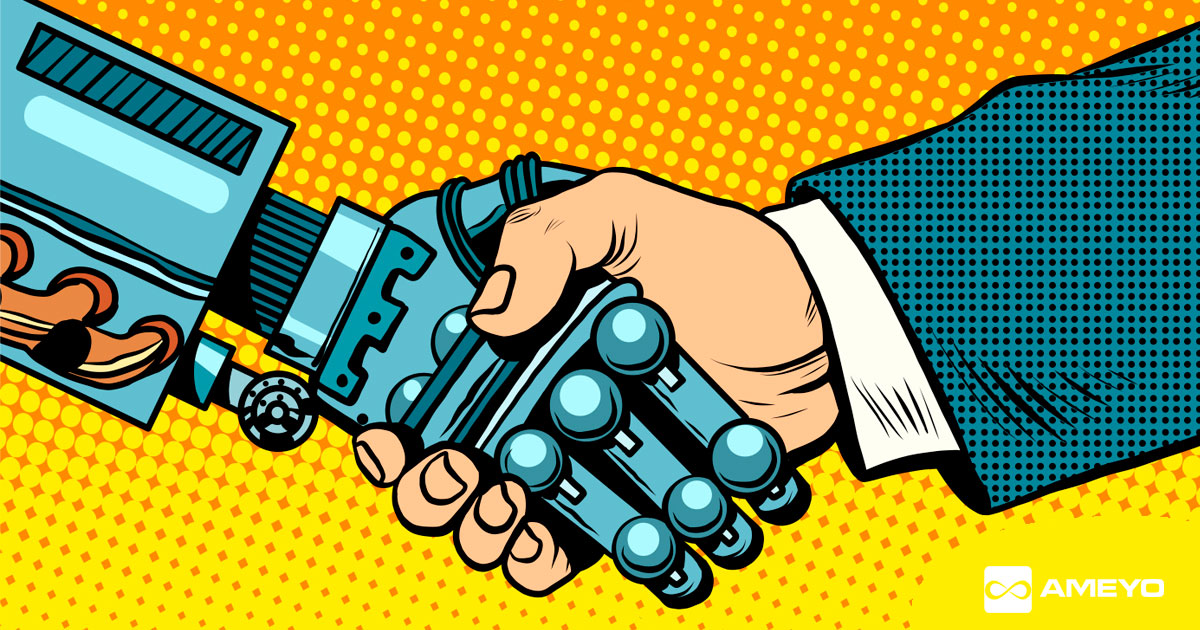What is the Internet of Things (IoT)?
The Internet of things (IoT) is a cluster of physical devices that can be sensed and controlled remotely through the exchange of data and information over an existing network. This allows better integration of these physical objects into the virtual world, improving efficiency of the applications and reducing the effort needed to control these. With the help of artificial intelligence (AI), IoT improves economic viability and accuracy of different processes and they can be used with ease in everyday life.
IoT goes beyond ordinary machine-to-machine communication and widens the canvas by offering augmented connectivity of devices and the ability to operate across a variety of protocols and applications. These devices can also collect information independently and proactively exchange data and information with other “smart” devices connected to a network. They are often embedded in a larger scheme of things and the interconnection between multiple devices is leading to an advancement in most fields.
The best thing is that they can be easily integrated into the available software and hardware infrastructure. Smart thermostats, smart door locks, wearable digital devices are some of the well-known examples of IoT.
What are chatbots?
A chatbot is a complicated computer program which can replicate actual human conversation over the internet. The conversation could be through textual means or by auditory means. Chatbots are often used by contact centers to guide a conversation with a caller by asking them to choose various menus and options by pressing a particular number on the keypad of a phone set.
In non-voice processes, chatbots are being used to carry on chats on company website and social media pages intuitively. Chatbots like Apple Siri and Android Auto are being used in cars to allow the driver to negotiate road traffic without taking hands off the steering. They can use voice command to place calls, get satnav assistance and also get most other basic touchscreen based operations performed without the “touch”. They also have an artificial memory which allows them to remember preferred settings of the driver as well as numbers and contact details of their acquaintances.
Chatbots are now being used as IoT interfaces because they have the required intelligence to receive and exchange data with other devices connected to an existing internet infrastructure. It has the potential to completely revolutionize the customer service industry. Chatbots will offer the companies the opportunity to replace human agents with chatbots in low-productive customer service areas without hampering customer experience. With today’s customers who are apprehensive of voice calls and want quick response time and empowerment, self-service and automation are the best bets. Chatbots now offer the chance of providing 24×7 customer service seamlessly across a multichannel communication network.
Ecommerce providers in countries like Japan and China have now tried to enhance customer experience by making them stay in their familiar environment while making transactions. They are using social media apps/chatbots that people normally use for socializing to take orders and deliver them superior customer experience. This means that the customer won’t need to chat with a bot on the company’s website, which is problematic if they are using smartphones or download an app which they would not use for any other purpose. This is how chatbots are integrating themselves in the everyday life of customers to offer smart solutions to their problems.
Reasons for which chatbots can work as IoT interface
There are quite a few reasons why chatbots fit the bill when it comes to communication over IoT interface. It is also easy for programmers who don’t have to update these programs on a minute by minute basis. They are intelligent enough to change settings intuitively to suit a particular conversation and create a perfect customer experience. IoTs are smart devices that we see in our everyday life and if chatbots can be made a part of the IoT interface, then exchange of information and data will be more convenient and it will happen throughout the day because chatbots don’t tire!
- You won’t need to remember how different IoT apps work: You can easily operate smart IoT devices using everyday language. But that’s not all. You won’t have to memorize complicated command sequences and information required to establish intent. You won’t need to learn any difficult GUI programming. You can effortlessly interact with the devices that you use on a daily basis to perform different kinds of tasks and make queries.
- Chatbots can be instructed in natural language: Chatbots are intelligent enough to understand instructions in simple language or even gestures or autocorrect typos in case of a messaging app and understand common slangs. They are also capable of self learning. So, as the chatbox interacts more with you, it understands you better and makes the communication more intuitive. It can understand the intent clearly even if the entire command is not entered.
- Chatbots can refine user requests over IoT interface for further communications: If you receive information from a device regarding something, you can ask it back a question using natural language and a smart chatbot can answer your query if it has the knowledge. This has smoothened interactions with chatbots over IoT against traditional design interfaces which face problems with information abstraction.
Human-Like Conversation in all languages with Ameyo Voicebot
Smart bots are the way forward and combining them with IoT can have advantages beyond belief. It can quicken response time, cut down unnecessary wastage of time by avoiding paraphrasing or asking questions the answer to which it already knows and works from anywhere on a 24×7, non-stop basis. It is the future. If you want your contact center to survive in such an ever changing scenario, it would make sense to install chatbots to take care of customers, wherever you think they can replace human agents.


